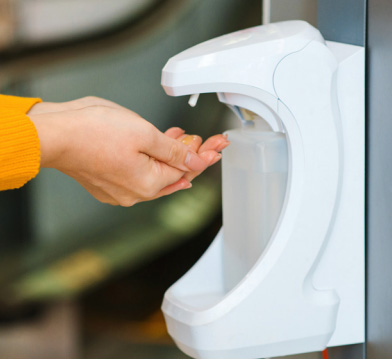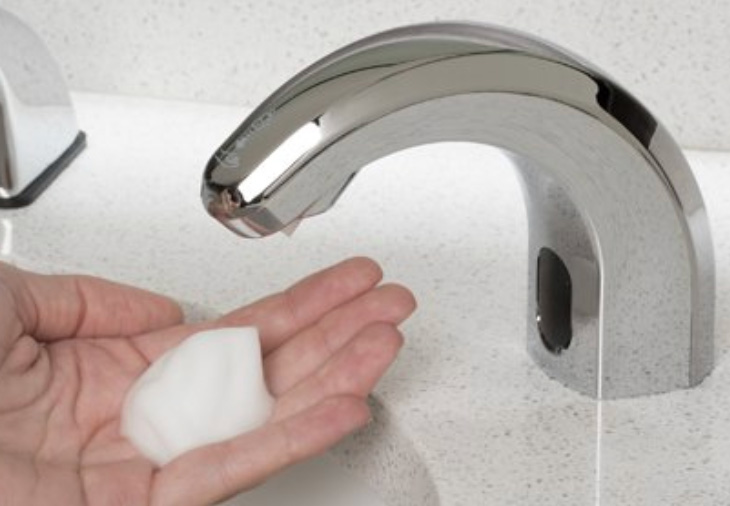Many workers are returning to the office. This can be a source of concern and stress. Employers must guarantee them safe and productive spaces to preserve their health while minimizing the risk of contamination. The necessary adaptations must be made at various levels, namely the adaptation of physical spaces (ensuring the distance of 2m, modifying the ventilation system, etc.), the organization of work (favoring remote work, avoiding non-essential face-to-face meetings, etc.) and communications (keeping employees well-informed and well-trained when it comes to the new sanitary measures).

One of the most important sanitary measures that will have to be implemented is of course the cleaning and disinfection of everyone’s hands and facilities, as well as private and common workspaces.
A set of means will therefore have to be put in place to make workspaces safe and thus limit the risks for employees to contract COVID-19.
Furniture
• Implement improved cleaning protocols in office buildings.
• Schedule an initial thorough cleaning before employees return to the office.
• During the day, clean frequently and disinfect surfaces properly according to each cleaning product’s instructions.
• Choose antibacterial materials.
• Choose electrostatic cleaning options that consist of spraying an electronically charged mist on surfaces or objects.
• Clean up work environments by eliminating all unnecessary furniture and accessories.
• Make sure that the efforts and changes made in terms of cleaning and disinfection are made known to the employees.
Workspaces
• Ask your employees to remove all personal or unnecessary items from their desks and/or workstations to facilitate complete daily cleaning.
• Plan more regular housekeeping for work surfaces.
• Provide individual recyclable placemats to cover shared work surfaces.
People
• Make handwashing mandatory before and after using common areas.
• To give your employees peace of mind, make sure they always have a “personal cleaning kit” on hand including disinfectant or antibacterial hand wipes. You can even distribute a personal disinfectant kit.
• Ensure that maintenance personnel are properly trained in the new, improved and more frequent cleaning and disinfection measures.

Common areas
• Install disinfectant stations and disinfectant wipe dispensers in strategic places (such as the various entrances, reception, open areas, toilets, cafeteria, etc.) as well as signs indicating the instructions to be followed for hand washing and disinfection.
• Ensure workers disinfect areas and objects after using them.
• Introduce new tools to reduce contamination such as faucets, paper dispensers and non-contact flushes.
• Adapt everything that will be touched by several people: switches, thermostats, photocopiers, trash cans, blinds, etc.
• Use a NanoSeptic™ hands-free door opening system that provides continuous self-cleaning surfaces using mineral nanocrystals to create an oxidation reaction.
• Adopt the entire range of NanoSeptic™ products (desk and counter mats, mousepads, tissue box covers, NanoSeptic ™ film skins for door handles, etc.) for more security.
• Place cleaners and disinfectants in each conference room as well as at reception for quick and easy surface cleaning.
• At the reception and in waiting areas, choose individual chairs rather than multi-seat sofas. Also, remove all accessories to facilitate cleaning and disinfection.
• Set up UV light disinfection stations or antibacterial wipes to clean the phones. Cell phones are a proven source of cross-contamination. Did you know that the majority of people touch their cell phones between 2,000 and 5,000 times a day?
To learn more on how to adapt your workspaces to COVID-19, contact the Lib. experts and check out the free documentation they’ve made to help you.
